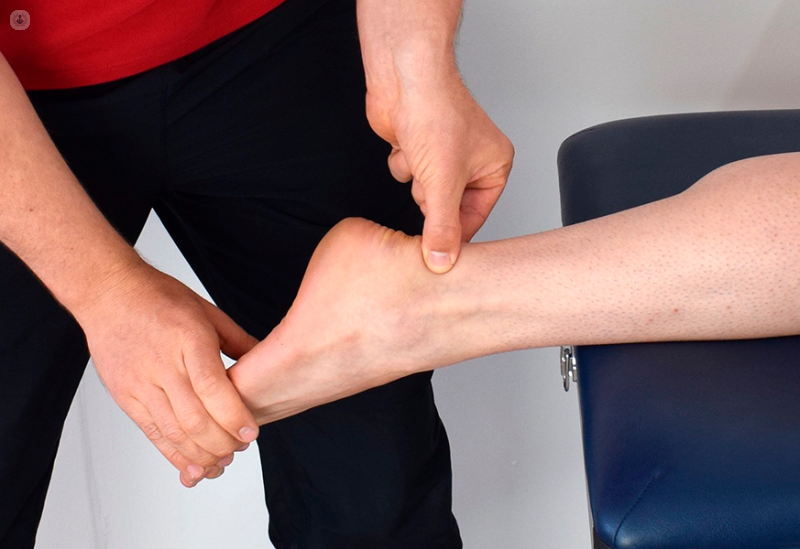

What is ankle arthrodesis?
Ankle arthrodesis, also known as ankle fusion, is a surgical procedure to fuse two or more bones in the ankle and anchor the joint. This procedure is performed under local anesthesia and on an outpatient basis.

Why is ankle arthrodesis performed?
Ankle arthrodesis is most commonly performed to treat severe and painful arthritis, a degenerative condition which affects your joints. For most patients, arthritis can be managed with conservative treatments such as physiotherapy and anti-inflammatory drugs. However, if these treatments fail to relieve the pain sufficiently, surgery may be considered.
Ankle arthrodesis is also carried in some cases of foot deformity, where the bones are misaligned and causing problems with walking.
Ankle arthrodesis is not recommended where:
- there is not enough bone to fuse
- the nerves in the ankle are severely damage
- the blood supply to the ankle is poor
What does the procedure involve?
Ankle arthrodesis may be carried out as an open or minimally-invasive procedure. In both situations, an incision is made to gain access to the ankle joint and tools are used to remove the cartilage. A bone graft is then placed between the ankle bones, and screwed in place using a metal plate. Finally, the incision is closed with stitches and the ankle placed in a splint to keep it stable.
Post-operative care
After your operation, you will need to keep the ankle elevated to minimise any swelling. It will be about 6-8 weeks before you are able to put weight on the ankle, and you may need a crutch or walker during time to help you get around.
Stitches are removed within two weeks after surgery. At this point you will start on physical therapy to maintain mobility in your ankle and encourage the fusion process. After three months, you should be able to wear normal footwear and carry out normal exercise.
